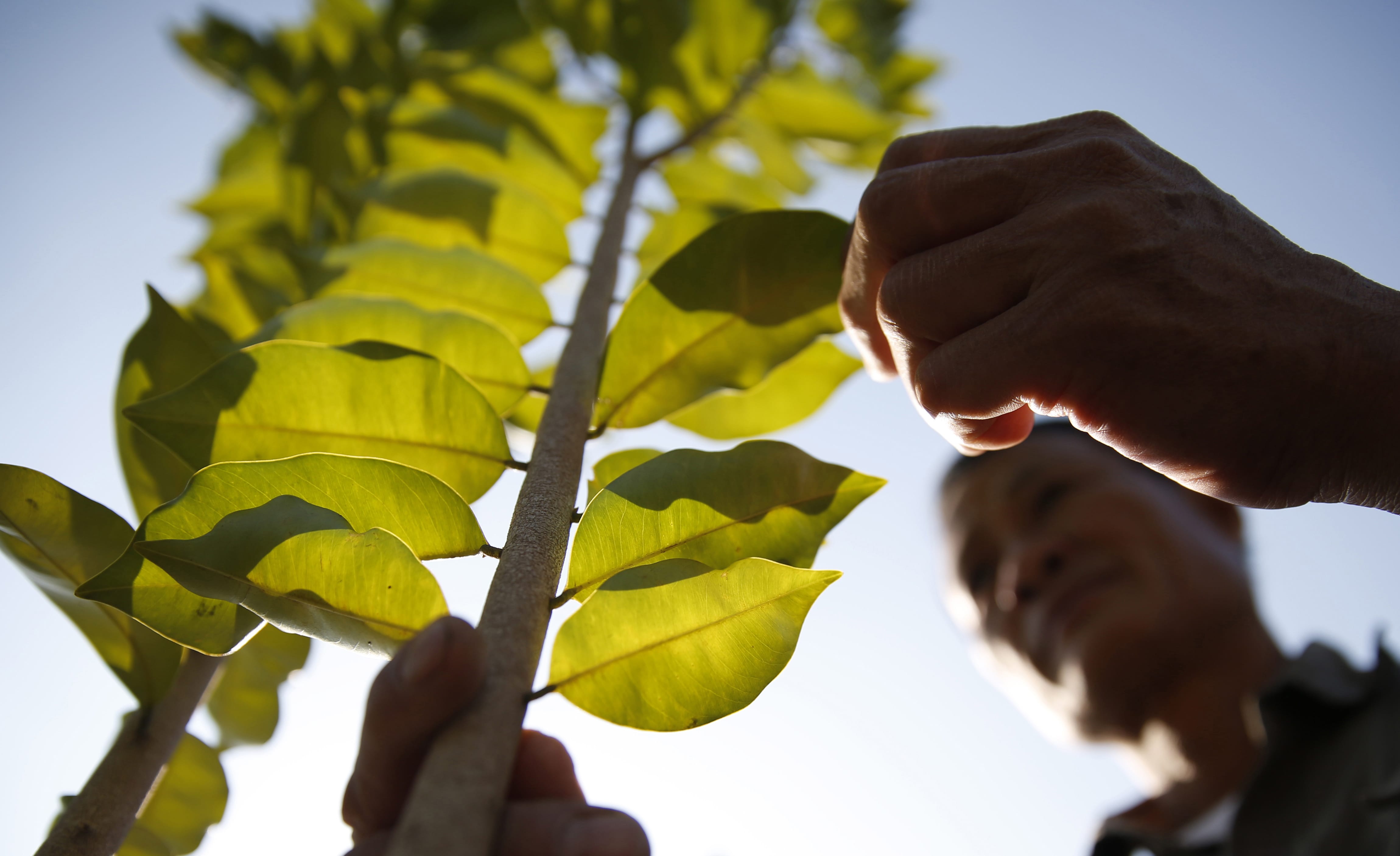HONG KONG — On land deep in Hong Kong’s lush green northern suburbs near the border with mainland China, farmer Koon-wing Chan is working to keep a legendary scent alive in the city known as the Fragrant Harbor.
Chan runs Hong Kong’s last commercial plantation of agarwood trees, prized throughout the centuries for aromatic resin used to make incense, perfume and medicine.
He has no hope his sons will carry on the labor intensive business and also faces an increasing threat from Chinese poachers. But the tree’s rich history that intersects with the lives of his forefathers gives Chan a sense of mission. And the trade in the wood and oil is seriously lucrative.
“It’s very special. There’s no one else that plants these trees,” said Chan, 55, who returned to Hong Kong in 2009 ago to revive the plantation after nearly a decade spent working in Northern Ireland.
“In all of Hong Kong there’s only one place. This place,” he said proudly as he stood among hundreds of seedlings waiting to be planted, wearing a T-shirt that said “Money does grow on trees.”
Agarwood, also known as aquilaria sinensis, was once grown in plantations across its native southern China, including parts of northern Hong Kong, as far back as the 960-1279 Song Dynasty to provide the raw material for joss sticks shipped as far afield as the Arabian Peninsula.
The trade died out as Hong Kong’s economy modernized and the city became a center for finance, not fragrance.
However, China’s economic boom has brought new life to the market, with demand from newly wealthy mainland Chinese especially strong for bracelets and ornaments carved from the incense tree’s dark, resinous heartwood.
Surging prices are also driving an increase in poaching from Hong Kong’s protected parks. Experts predict that the most sought-after specimens, big trees as old as 200 years, are in danger of disappearing from the wild in a matter of years.
“They are the cream of the stock, so if you systematically take away the best trees, the strongest trees, the local incense trees decline not just in numbers, but also in terms of genetic quality and that is bad,” said Chi-yung Jim, a tree expert at Hong Kong University.
Mainland Chinese syndicates typically hire people to cross into Hong Kong and pose as hikers to search for trees, Jim said. The poachers often indiscriminately slash the trees to get their precious sap running, then return later to cut them down, usually in the dead of night, and smuggle the illicit haul back to mainland China.
The Aquilaria species is listed under the Convention on International Trade in Endangered Species of Wild Fauna and Flora, which restricts its legal trade. At least 340 people have been arrested since 2005 for illegal felling of incense trees, according to the Hong Kong government, which is planting 10,000 saplings a year to help the species survive.
After Chan appeared recently on a television news report, thieves stole a hefty piece of agarwood thought to be 80-100 years old and worth an estimated HK$4.2 million ($542,000) from his home.
Prices for a liter of the oil extracted from the wood, meanwhile, have risen to as much as $80,000 on the open market.
Chan returned to Hong Kong to revive his late grandfather’s plantation and a desire to help save the agarwood trees from disappearing from the territory.



